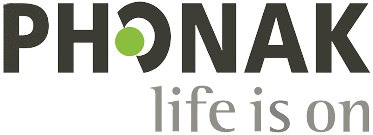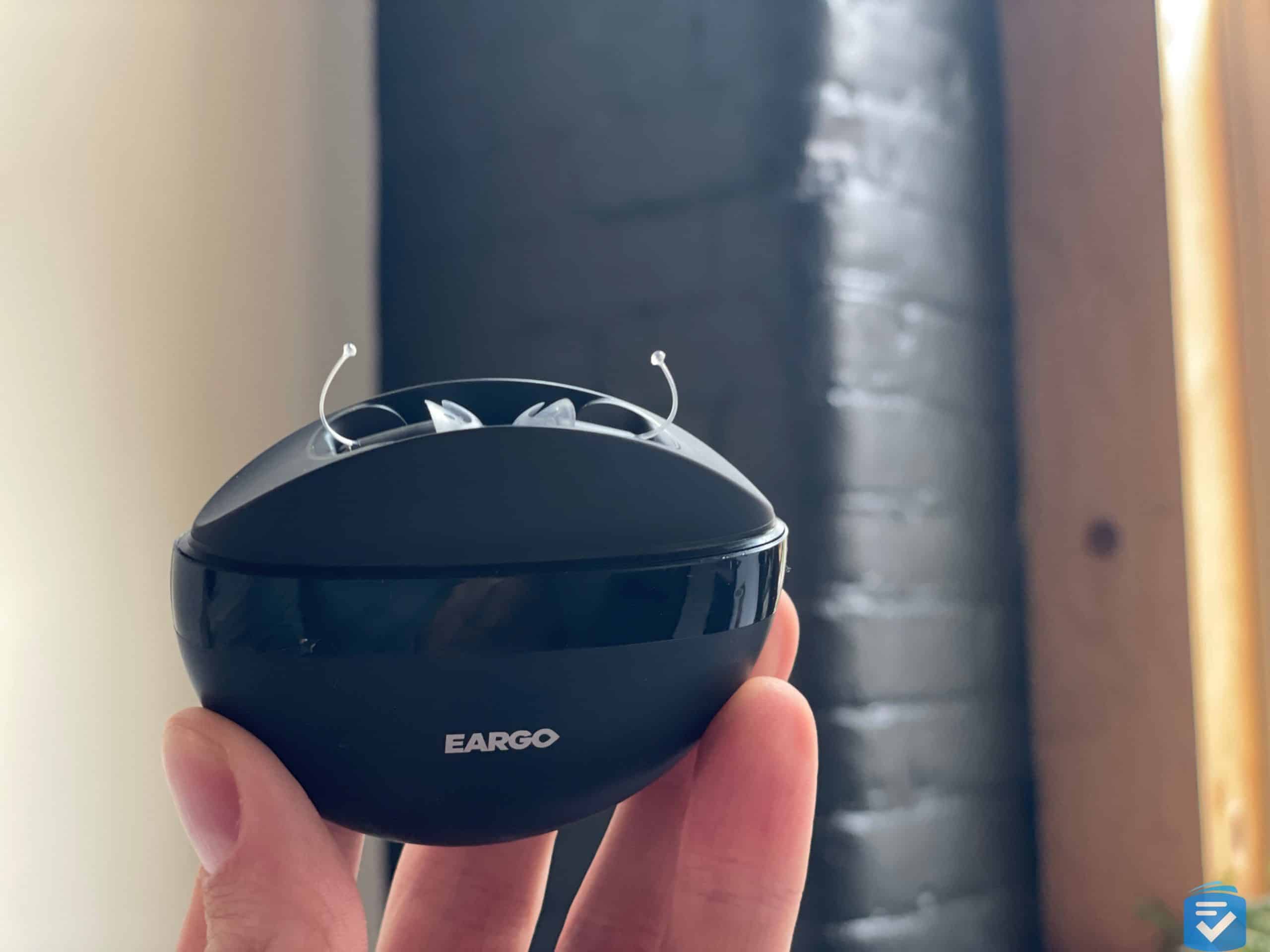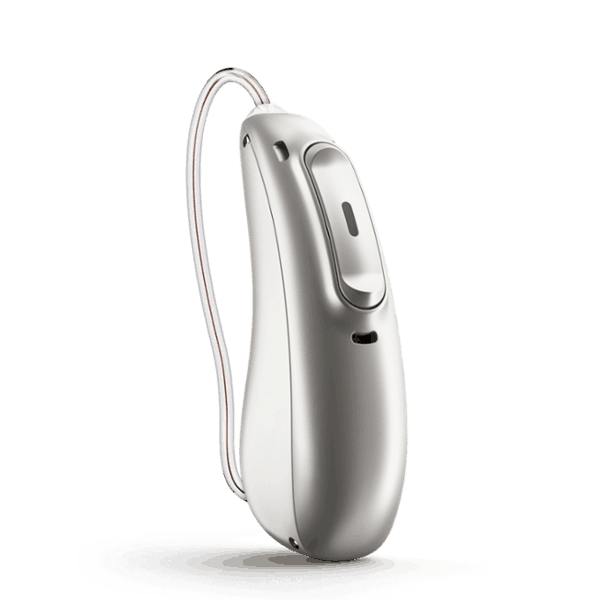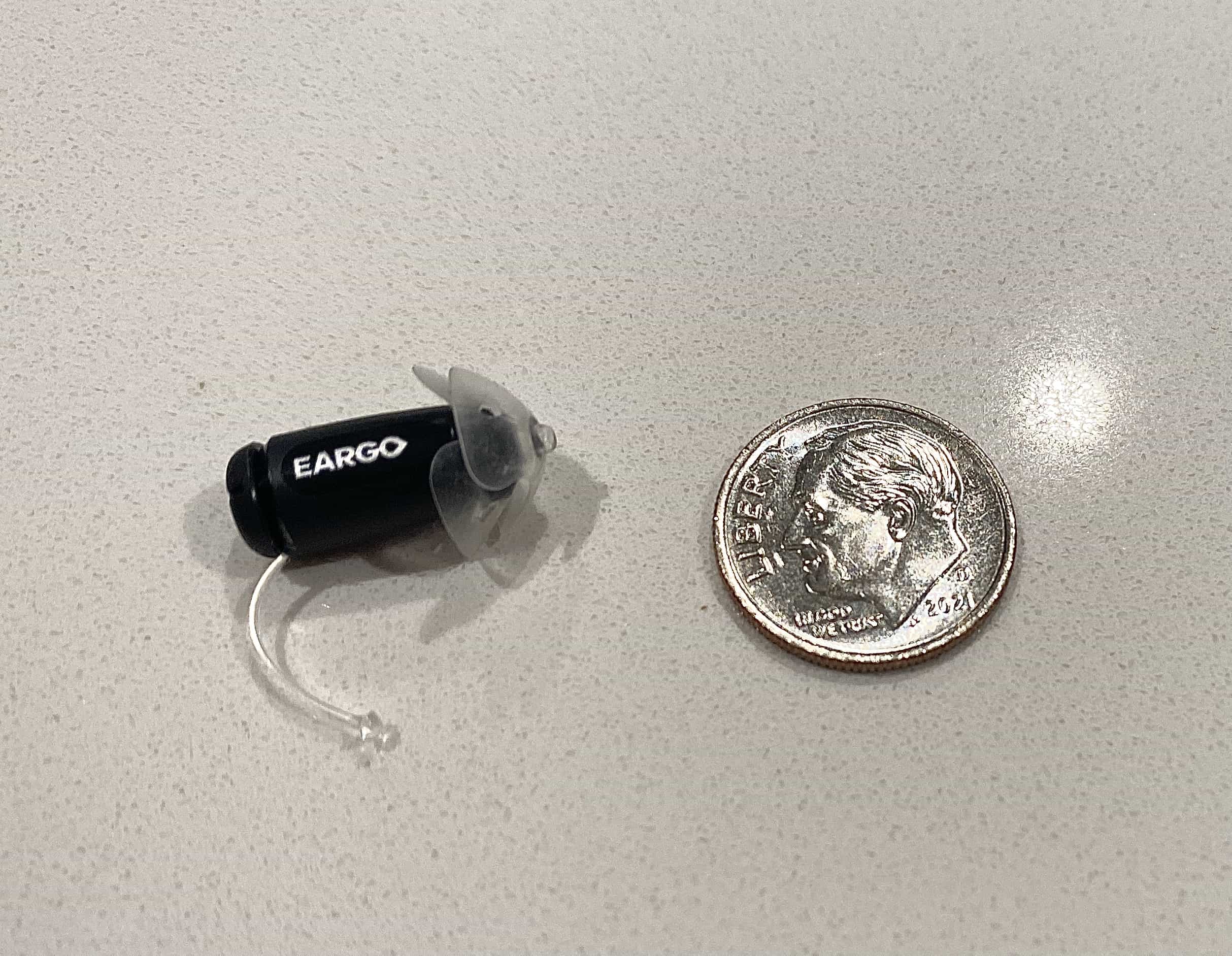Phonak vs. Eargo
After extensively testing both brands, we found that Phonak hearing aids generally provide more advanced technology and comprehensive solutions for various degrees of hearing loss. Eargo’s primary advantages, on the other hand, are their discreet design and direct-to-consumer approach. As an OTC hearing aid brand, Eargo’s devices typically cost less, while Phonak aids, which require professional fittings, can cost several thousand dollars for a single hearing aid.
Overall, both brands provide quality hearing solutions for different types of users. Your ideal choice will depend on your hearing loss severity, technological needs, budget, and preference for professional fitting versus self-management.
Key Findings
- Phonak hearing aids offer superior performance for those with any level of hearing loss, from mild to profound. They feature cutting-edge technology, including Lumity and Infinio platforms, which provide exceptional sound processing capabilities.
- Eargo hearing aids are remarkably small and nearly invisible when worn, making them appealing to those concerned with appearances.
- Phonak requires professional fitting and purchasing through licensed hearing health care providers, while Eargo devices can be purchased directly online.
FYI: Phonak and Eargo each have their distinctive strengths and are both somewhat pricey. For more affordable alternatives starting at $297 per pair, check our guide to this year’s best hearing aids overall.

|

|
|
|---|---|---|
| Editor's Ratings | ||
| Price Range | $799-$2,699 per pair | $3,000-$6,000 per pair |
| Style | Completely-in-canal | Various (BTE, RIC, ITE, CIC, etc.) |
| Bluetooth Streaming | LINK by Eargo only | Yes (most models) |
| Battery Type | Rechargeable | Rechargeable or disposable |
| Warranty | 1-2 years | 1-4 years (varies by provider) |
| Trial Period | 45 days | Varies by provider (typically 30-60 days) |
| Remote Support | Included | Available through myPhonak app |
| App Control | Yes | Yes (myPhonak app) |
| Purchase Method | Direct-to-consumer | Through licensed hearing professionals |
| Hearing Loss Range | Mild to moderate | Mild to profound |
| Contact | ||
| Phone Number |
Call for best price:
866-334-3974 |
|
| Website | View Packages Links to Eargo | View Pricing Links to ZipHearing.com |
Eargo Hearing Aids Overview
Combining sleek design with user-friendly technology, Eargo hearing aids’ aesthetic appeal has drawn comparisons to Apple products. Their digital features have consistently impressed us, particularly their smartphone integration. Users can easily adjust settings through a companion mobile app, offering convenient control over their hearing experience. Each Eargo device comes with a portable rechargeable case similar to those used for wireless earbuds, simplifying the charging process and ensuring power is always available.
Eargo’s current lineup (Link, SE, and 7) impressed us across the board. While most models don’t offer Bluetooth streaming capabilities (with the exception of the Link), they provide a clear and comfortable natural listening experience for everyday conversations. The in-canal placement ensures a discreet appearance while utilizing the ear’s natural anatomy to deliver more authentic sound quality.

>> Read more: The Best Invisible Hearing Aids
As an over-the-counter option, Eargo hearing aids can be purchased directly without an audiologist visit. This approach makes them more accessible and, in most cases, more affordable than prescription devices. However, it’s important to note that per FDA regulations, OTC hearing aids are only approved for users with mild-to-moderate hearing loss.
To learn more about our hands-on experience with these devices, read our full Eargo review.
Phonak Hearing Aids Overview
Phonak has been at the forefront of hearing aid innovation since the 1970s when they created the first behind-the-ear hearing aid, revolutionizing the industry from body-worn devices with long wires. Today, Phonak offers a comprehensive range of hearing aid styles addressing various hearing needs, including solutions for single-sided hearing loss and tinnitus.
Their current lineup features cutting-edge platforms like Lumity and Infinio, which deliver exceptional sound quality and connectivity options. Phonak was the first to offer connectivity via Bluetooth to any cell phone, not just smartphones. That gave users the freedom to stream calls, music, podcasts, and other audio content hands-free from Bluetooth-compatible devices without being restricted to specific phone brands.

>> Read More: The Best Android Hearing Aids
Phonak’s product range includes a range of styles, such as Audeo (receiver-in-canal), Naída (behind-the-ear for severe-to-profound hearing loss), Virto (custom in-the-ear), CROS (for single-sided hearing), and Lyric (long-term wear). The Lyric model is unique, offering a completely invisible solution that can be worn continuously for months without removal. One study finds that these “extended wear” hearing aids are better than daily wear devices in terms of adherence and one’s self-image.
Phonak hearing aids are only available through licensed hearing health care professionals, requiring a proper hearing evaluation and professional fitting. While this approach ensures personalized care tailored to specific hearing needs, it generally results in higher costs compared to over-the-counter alternatives.
>> Read More: The Best Affordable Hearing Aids
To learn more about our experience with these devices, read our full review of Phonak hearing aids.
Performance Comparison
Both Eargo and Phonak deliver quality sound experiences, though they’re designed for different hearing needs and lifestyles. Remember that each brand offers multiple models with various features and capabilities. Phonak hearing aid models, in particular, are highly customizable.
In quiet home environments, Phonak’s advanced models, particularly those with Lumity and Infinio technology, provide exceptional clarity and natural sound reproduction for conversations and music listening. Their directional microphone technology creates a comprehensive soundscape that closely mimics natural hearing. Eargo devices, especially the Eargo 7, deliver a remarkably organic listening experience with natural voice reproduction, considering their compact size.
The Eargo 7’s Sound Adjust+ technology automatically adapts to surrounding environments, reducing background noise in busy settings while allowing background sounds to be heard more clearly in quieter environments. This adaptive technology is particularly useful for users who frequently transition between different acoustic settings.
Phonak demonstrates technical advantages in complex listening environments such as restaurants or crowded venues. Their advanced models feature Ultra Focus mode and sophisticated noise reduction that effectively isolate conversations from background noise. Eargo’s performance in these challenging environments varies by model. The Eargo 7 performs admirably for an OTC device but shows more limitations in distinguishing and clarifying speech amid significant background noise.
In outdoor settings, Eargo’s completely in-canal design proved particularly effective in windy conditions, with minimal wind interference across all models. Phonak’s behind-the-ear models are more susceptible to wind noise, though their advanced models incorporate wind noise reduction technology to mitigate this issue.
Battery performance varies between brands. Phonak’s rechargeable models offer excellent longevity, while their disposable battery options provide flexibility for users who prefer traditional power sources. Eargo devices average 16-to-18 hours per charge, with their portable charging case adding convenience for on-the-go power recharging.
For users with more severe hearing loss, Phonak is the clear winner, as Eargo devices are designed exclusively for mild-to-moderate hearing loss. Phonak’s Naída models are specifically engineered to address severe-to-profound hearing loss with powerful sound amplification and are even compatible with cochlear implants.
>> Read More: The Best Hearing Aids for Severe Hearing Loss
Features Comparison
Both Phonak and Eargo incorporate advanced audio processing technologies, but their feature sets differ significantly.
Phonak offers an extensive array of technological innovations across their product lineup. Their latest platforms feature all-access directionality combined with Ultra Focus settings that enhance speech recognition in complex audio environments like crowded restaurants. Most Phonak devices incorporate wireless connectivity for direct audio transmission from compatible devices, including smartphones and remote microphones. The myPhonak application gives users detailed control over their hearing experience, enabling customized audio profiles for different locations and the ability to receive remote fine-tuning from hearing professionals.
Phonak’s supplementary device ecosystem is particularly extensive. It includes the TV Streamer for television audio, the Phone Clip+ for mobile communications, various Roger microphone options for challenging listening situations, and physical remote controllers for those preferring tactile adjustments. These accessories substantially expand functionality across various acoustic scenarios, and they would be particularly useful for people who don’t own a smartphone.

Eargo prioritizes minimalism and intuitive controls. Their proprietary Sound Match system enables personalized configuration through mobile devices. Sound Adjust, their adaptive technology, monitors surrounding audio conditions and automatically transitions between settings. Although wireless streaming functionality is limited within Eargo’s product range, their newest offering — the Eargo Link — does incorporate this capability. Eargo offers relatively few accessories comparable to Phonak’s extensive ecosystem.
In addition, both manufacturers provide potential relief options for individuals experiencing tinnitus symptoms. Phonak incorporates specific tinnitus management functionality in select models, while Eargo’s engineering approach and audio enhancement capabilities may help alleviate tinnitus discomfort for many users.
>> Read More: The Best Hearing Aids for Tinnitus
Pricing Comparison
At around $3,000 to $6,000 for a pair, Phonak hearing aids are generally more expensive than Eargo devices. Eargo prices range from $799 per pair for the Eargo Link to $2,699 per pair for the Eargo 7. This price includes the devices, charging case, and standard support package with remote assistance.
>> Read More: The Best OTC Hearing Aids
Phonak hearing aids must be purchased through licensed hearing health care professionals. Their pricing is not standardized and varies significantly depending on the provider, location, included services, and specific model. Compare this to Eargo, which has a standardized price for each of their models.
It’s important to note that while Phonak’s pricing appears higher at first glance, the cost difference makes sense. Phonak’s pricing often includes professional services and more advanced technology for a broader range of hearing loss, while Eargo’s devices are specifically designed for mild-to-moderate hearing loss only.
Warranties Comparison
Eargo offers standardized warranty coverage: The Eargo Link and SE come with a one-year warranty, and the Eargo 7 includes a two-year warranty. These warranties cover repairs at no extra charge and provide one-time loss coverage for the Eargo SE ($295 per device) and Eargo 7 ($395 per device), with no loss coverage for the Eargo Link.
Phonak warranty terms vary depending on the hearing health care provider. Typically, Phonak hearing aids come with a manufacturer’s warranty of one-to-four years, covering defects in materials and workmanship. Some providers may offer extended warranty options for an additional cost. Because Phonak hearing aids are fitted and sold through audiologists, warranty service typically requires in-person visits to your provider, who handles the warranty claim process with Phonak.
Phonak warranties generally do not cover loss of the hearing aids themselves, but this varies by provider. Some hearing health care professionals offer loss and damage coverage for an additional fee, and others include it in their standard warranties.
Customer Support Comparison
The primary difference in customer support between Eargo and Phonak is the contrast between remote and in-person assistance.
Phonak’s customer support is mainly delivered through the hearing health care professional who fits your devices. This approach provides personalized, face-to-face support from a professional who is knowledgeable about your specific hearing profile. Most audiologists offer comprehensive support for the devices they sell, including regular in-person appointments for cleaning, maintenance, and programming adjustments. This hands-on professional support is particularly valuable for users with complex hearing needs or those less comfortable with managing hearing aids on their own.
>> Read More: Guide to Hearing Aid Maintenance
Phonak also offers remote support through the myPhonak app. This feature allows users to receive remote adjustments from their hearing care provider without requiring an in-person visit, combining professional support with remote convenience.
Eargo offers free lifetime remote support with hearing professionals available via phone, video chat, or email to assist with setup and adjustments. This remote support is included at no additional cost for the lifetime of your devices, regardless of which model you purchase. For users comfortable with technology, Eargo’s combination of smartphone apps and remote support provides a convenient way to manage hearing aids without office visits. Some users, however, particularly those with dexterity issues, might prefer hands-on assistance from a hearing professional.
Bottom Line
Our thorough evaluation suggests Phonak and Eargo represent two distinct approaches to hearing enhancement, each with their own advantages:
Phonak might be your ideal match if:
- Your hearing impairment is moderate to profound.
- You’re seeking cutting-edge audio processing with extensive connectivity capabilities.
- You value personalized setup and continuing care from hearing health care experts.
- Your hearing profile includes specialized concerns such as asymmetrical loss or tinnitus.
- You would benefit from supplementary devices like the Roger system for difficult acoustic environments.
- Your health care coverage potentially extends to prescription hearing solutions.
Eargo could be the better solution if:
- Your hearing loss is in the mild-to-moderate range.
- Aesthetic considerations and invisibility are top priorities.
- You prefer purchasing directly without health care appointments.
- You feel confident in handling your device setup and maintenance.
Frequently Asked Questions
-
Does Eargo or Phonak offer better value for money?
With their all-inclusive pricing, Eargo typically offers better value for mild-to-moderate hearing loss. For more severe hearing loss or complex hearing needs, Phonak’s prescription approach may provide better long-term value despite the higher initial cost.
-
Can I stream music with Eargo and Phonak?
Most Phonak models offer Bluetooth streaming capabilities for direct audio from smartphones and other devices, while only the Eargo Link supports audio streaming among Eargo’s models.
-
Which brand is better for first-time hearing aid users?
For first-time users with mild-to-moderate hearing loss who value discretion and simplicity, Eargo provides an accessible entry point. For those with more significant hearing loss or who prefer professional guidance, Phonak’s audiologist-supported approach may be better suited to your needs.
-
Do I need to see an audiologist to purchase either brand?
Phonak hearing aids require a visit to a hearing health care professional and are only available through licensed providers. Eargo hearing aids can be purchased directly online without a prescription or audiologist visit.
-
Which brand offers better options for severe hearing loss?
Phonak clearly offers superior options for severe-to-profound hearing loss, particularly with their Naída models, which are even compatible with cochlear implants. Eargo devices are specifically designed for mild-to-moderate hearing loss only and are not suitable for severe cases.

